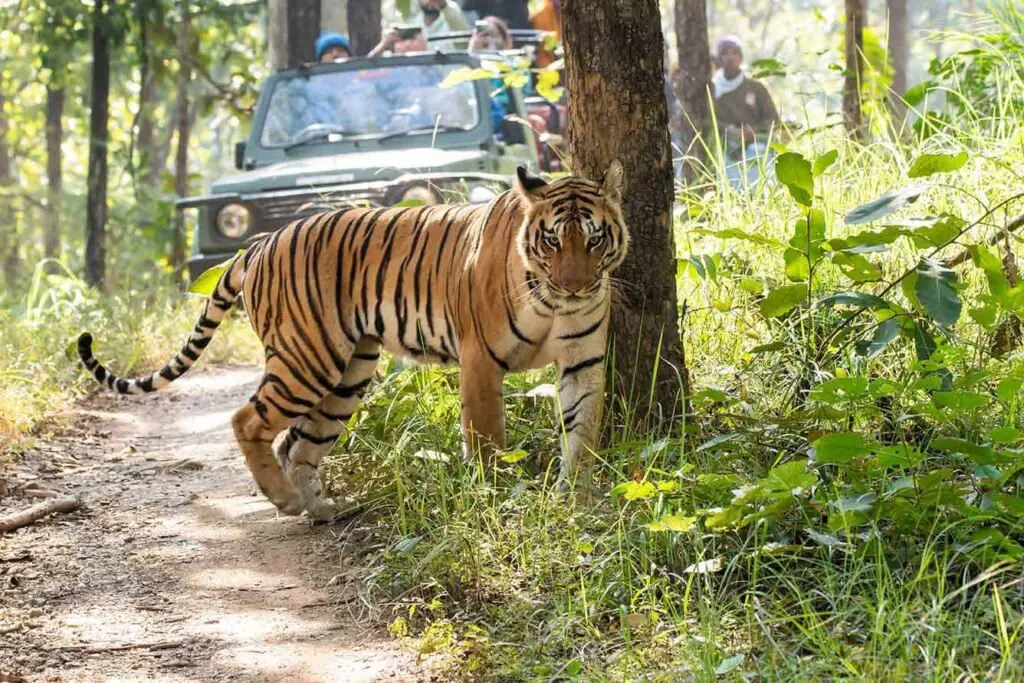HISTORY OF DUDHWA NATIONAL PARK
Dudhwa National Park, located in Uttar Pradesh near the Indo-Nepal border, has a rich history. It covers an area of about 490 square kilometers and is known for its dense forests, unique flora, and diverse wildlife. Established as a national park in 1977, Dudhwa began as a game reserve in the early 20th century. Conservationists saw its potential due to its biodiversity and campaigned to upgrade its status. By 1987, it became a part of Project Tiger, emphasizing its importance in protecting Bengal tigers.
The park holds significance for its marshlands, grasslands, and thick forests, which provide shelter to rare species like the swamp deer (barasingha), Hispid hare, and Bengal florican. The tiger population in Dudhwa has shown growth over the years, thanks to strict conservation measures and habitat management. Additionally, the park’s Sal forests are some of the densest in the region, forming a unique ecosystem. It’s also home to Asian elephants, leopards, and numerous species of birds and reptiles.
For visitors, the best time to experience Dudhwa’s wildlife is between November and May, as the park remains closed during the monsoon season. Tourists are encouraged to take guided safaris for optimal wildlife viewing. Accommodations vary from forest rest houses to private lodges nearby, offering a full experience of Dudhwa’s natural beauty. To preserve its ecosystem, several regulations are in place, like limited tourist access to core areas and restrictions on motor vehicles. Visitors are encouraged to respect these rules to help sustain the park’s delicate environment.
| Dudhwa National Park Highlights | Details |
|---|---|
| Year Established | 1977 |
| Project Tiger Inclusion | 1987 |
| Area | 490 sq km |
| Key Species | Bengal tiger, swamp deer, Hispid hare |
| Best Time to Visit | November to May |
KISHANPUR WILDLIFE SANCTUARY
Kishanpur Wildlife Sanctuary, located about 30 kilometers from Dudhwa National Park in Uttar Pradesh, is a vital part of the Dudhwa Tiger Reserve. This sanctuary, founded in 1972, spans approximately 200 square kilometers. It plays a crucial role in connecting habitats for tigers, swamp deer, and other species within the Dudhwa landscape. Its grasslands, interspersed with small water bodies, make it an ideal home for diverse wildlife.
Swamp deer, also known as barasingha, find refuge here, as do elephants, tigers, leopards, and numerous bird species. Migratory birds like the bar-headed goose and Eurasian wigeon frequent the sanctuary, especially during winter, making it popular for birdwatchers. The Sharda River flowing through Kishanpur provides water resources that are vital to both wildlife and the area’s ecosystems.
Conservationists consider Kishanpur essential for maintaining tiger population connectivity across the Dudhwa-Katarniaghat landscape. Managed as part of the Dudhwa Tiger Reserve, Kishanpur’s protection efforts align closely with those of Dudhwa, emphasizing the need to safeguard tigers and other endangered species. Public access is limited, with most areas restricted to researchers and conservation workers to preserve the sanctuary’s undisturbed environment.
| Kishanpur Wildlife Sanctuary Highlights | Details |
|---|---|
| Year Established | 1972 |
| Area | 200 sq km |
| Key Species | Swamp deer, Bengal tiger, leopards |
| Water Source | Sharda River |
| Popular Season for Birdwatching | Winter |
KATARNIAGHAT WILDLIFE SANCTUARY
Katarniaghat Wildlife Sanctuary, located in Bahraich district, Uttar Pradesh, is another key component of the Dudhwa Tiger Reserve. Established in 1975, it covers around 400 square kilometers. Known for its riverine and grassland ecosystems, Katarniaghat serves as an important corridor for wildlife, linking Dudhwa and Kishanpur, and extends all the way to Nepal.
This sanctuary is famous for hosting the endangered Ganges river dolphins, a unique feature among India’s wildlife reserves. It also provides a habitat for gharials, swamp deer, and several migratory birds. During the winter months, species like the Siberian crane and painted stork arrive, drawing birdwatching enthusiasts to Katarniaghat.
The sanctuary is actively managed to protect its water bodies and habitats. Conservation efforts focus on safeguarding its vulnerable species, especially tigers, dolphins, and swamp deer. Strict regulations are in place to minimize human interference, and only limited tourism is allowed. Katarniaghat has also gained attention for its work in anti-poaching, with guards and staff dedicated to preserving its wildlife. For those visiting, the ideal time is between November and April, allowing for safari tours along its diverse terrain.
| Katarniaghat Wildlife Sanctuary Highlights | Details |
|---|---|
| Year Established | 1975 |
| Area | 400 sq km |
| Key Species | Ganges river dolphin, gharials, swamp deer |
| Best Time to Visit | November to April |
| Conservation Focus | Anti-poaching, water body preservation |
Each of these sanctuaries offers unique features and plays a critical role in protecting India’s diverse ecosystems. Visitors should follow guidelines to minimize environmental impact, ensuring the continued preservation of these natural treasures.


